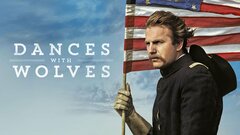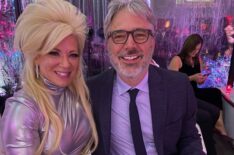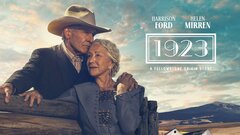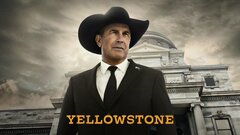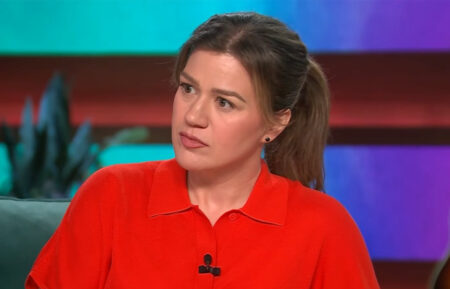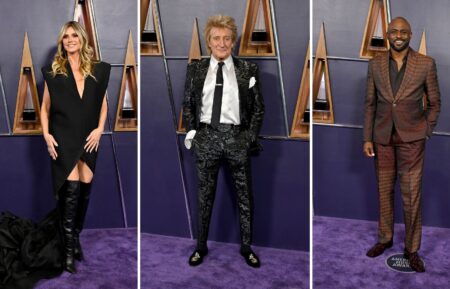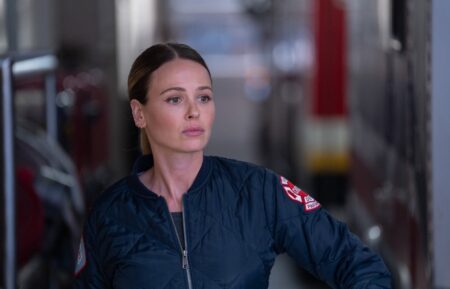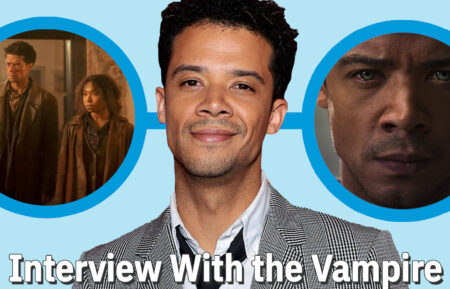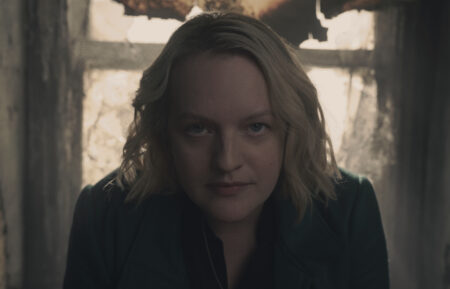‘1923’ Actor Michael Spears Talks ‘Sitting Bull’ Documentary, Working With Kevin Costner & More
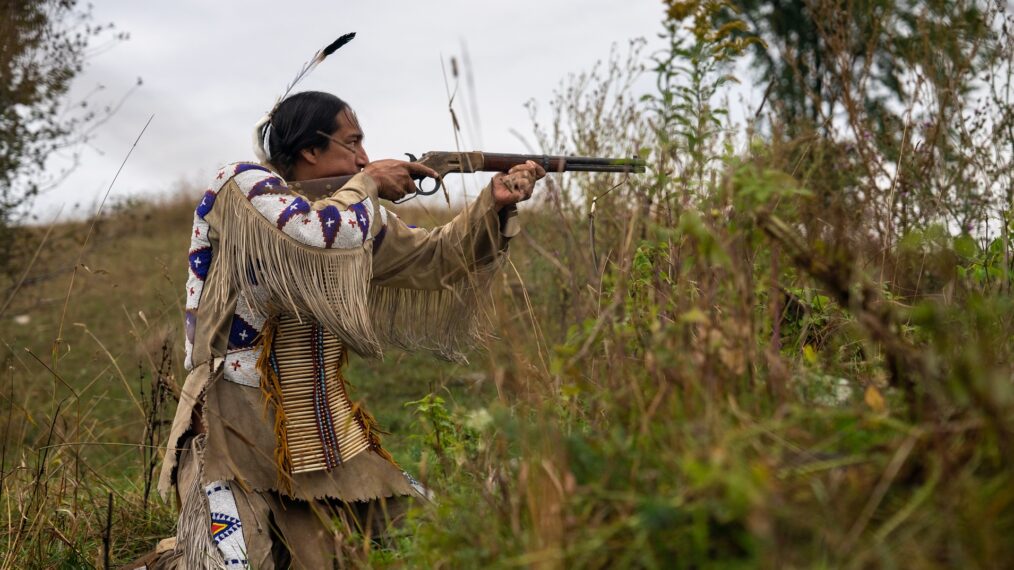
Q&A
The life of an iconic American figure is explored in a two-night Sitting Bull documentary. Narrated by Mo Brings Plenty (Yellowstone), the docuseries, premiering May 27 and 28 on History Channel, shines a light on the heroic life and legacy of the Lakota chief. Sitting Bull fought and guided his people through constant conflict with United States forces up until his death in 1890 at the age of 59.
The cinematic scenes help tell the story with Kul Wičaša Lakota actor Michael Spears playing the legendary figure. This particular project, executive produced by Leonardo DiCaprio’s Appian Way Productions, hits home for the 47-year-old. Spears’ credits include Dances with Wolves, 1923 and Reservation Dogs. Needless to say, the importance of this particular role is not lost on the indigenous actor.
Here Spears opens up about the making of the project and the importance of telling an authentic story that properly honors Sitting Bull.
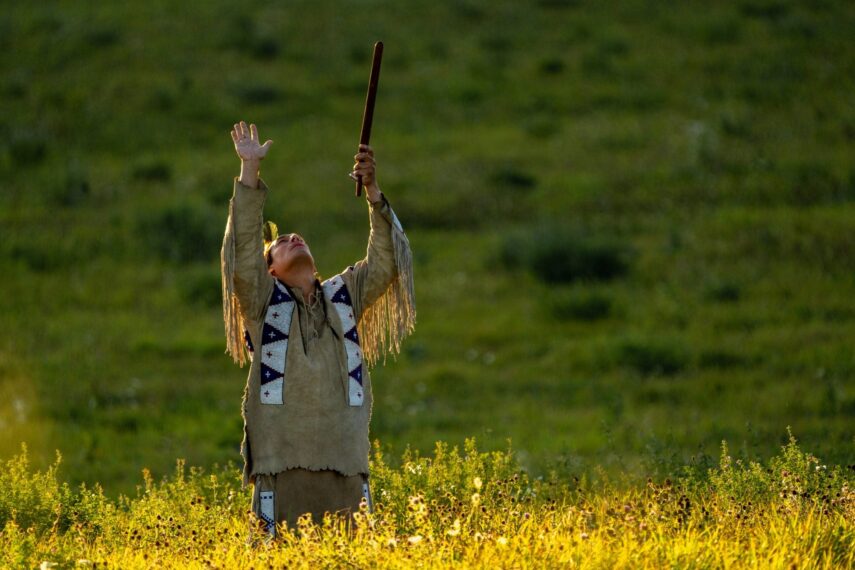
History Channel
How much pressure did you feel playing Sitting Bull?
Michael Spears: Sitting Bull being recognized as the only recognized chief of all the Lakota is a pretty big undertaking. It was an honor to be chosen to portray grandfather Sitting Bull, especially right now with all the political unrest and uncertainty of the tribal nations and the world at large. I felt it was pretty important to maintain my own integrity as an actor, let alone the work I put into the character…the physicality, the language. Lakota is a beautiful language. I was thankful it was all done in Lakota. primarily Sitting Bull’s character spoke Lakota. It’s an incredible honor.
A lot of time and care was clearly put into this project. The cinematic scenes make it feel like I’m almost watching a movie at the same time as a documentary. What was it like filming these scenes on set, especially the ones we see portraying the Battle of Little Bighorn?
It was very emotional. It’s almost like being jerked from my current reality to the life and times of the Lakota. It was very exciting, but also chaŋté mitȟáwa, meaning my heart was very heavy. I’m empathetic to begin with, so watching this play out before my eyes. It was like I was watching a movie myself. Just being transported back and watching all the other actors portray real events was mind-blowing, surreal. At times, it was exciting and sad.
This docuseries doesn’t shy away from the uncomfortable parts of American history. What did you make of how the story was told? Do you feel it cleared up any misconceptions about Sitting Bull?
For me, it puts to rest a lot of the propaganda against Sitting Bull. I believe America as a whole has failed in the telling of history as far as the Lakota is concerned. The story itself provided insights into the Lakota world-view instead of just detailing the transitions. I liked how they brought to light what an incredible strategist that Sitting Bull was and how spiritually grounded he was.
I thought they were going to touch on him a little more, being a holy man. That’s something we hold near and dear to our hearts. Those things need to be guarded. We’re still fighting. It’s not over. His struggle is our struggle. We are the land. We are still here. We’re not for sale just like the Black Hills aren’t for sale. We’re still fighting for our treaty obligations and protection of our sacred spaces. Even today, they are still mining in the Black Hills and taking gold. I think it’s about 50 million ounces to date. There are still operations going on. Even today, we as a people can’t freely go and commune with the land like we were promised and like we have done for hundreds of years.
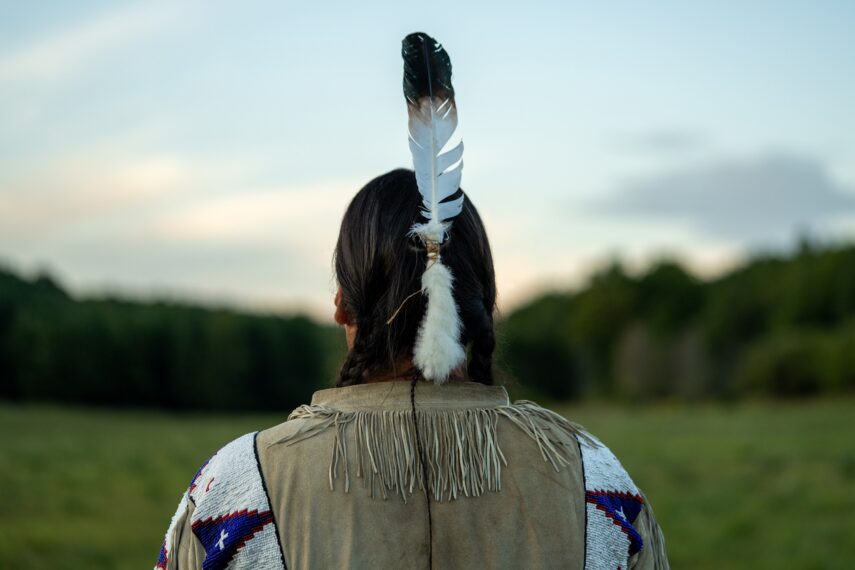
Sitting Bull/History Channel
You mention the world we’re in. People can take this story and all your people have endured and apply that to others who have faced similar strife and obstacles.
These stories have to be told. When is it a good time for the truth? It’s always a good time for the truth, especially with the indigenous lands and our rights. We have to continually defend against all the industrial interests, colonial mindset. No land has been fully repatriated for the Lakota. All is continually getting smaller and smaller. I think it’s very important for these stories that will hopefully bring more awareness and bring a broader audience. We need more representation and the truth to get out. In reality, who is giving land back? Who owns the land? It’s primarily white America, and the government who does, especially our sacred spaces.
As recently as 1980, the Supreme Court agreed. They were in favor of that; they so blatantly took the Black Hills and didn’t give it back. They just offered us more money. I think it was something like $120.5 million. That was what they considered the value of the land taken. Now today that number is somewhere $1.4 billion. I think now there are about 40,000 Lakota, Nakota and Dakota in the United States. So, it doesn’t give the true value of what the Black Hills means to us. It’s the center, the heart of all that is. Our stories go back millennia. They say that a man who was sick, starving and lonely could walk across the Black Hills and by the time he walks to the other side he is well, happy and fed. Spiritually, mentally and physically nourished.
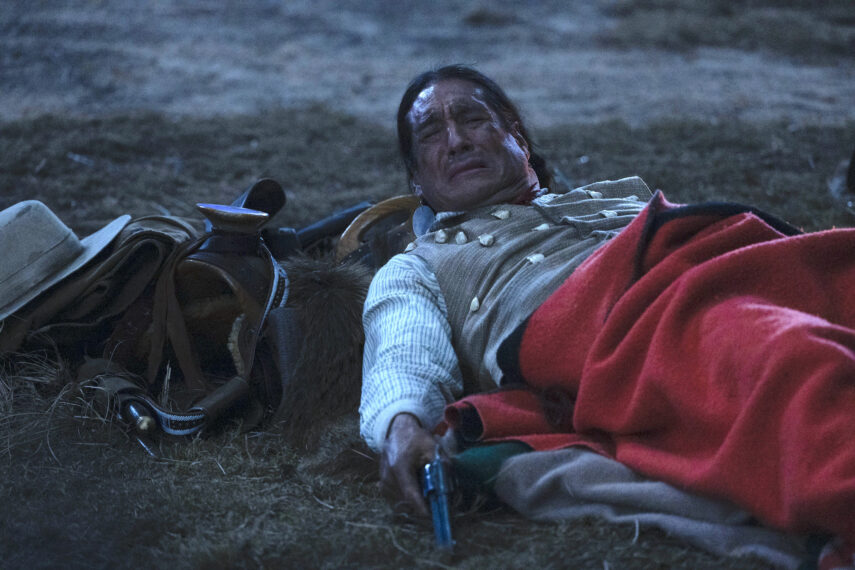
Michael Spears as Runs His Horse in ‘1923’ Season 2 Episode 6 – ‘The Mountain Teeth of Monsters’ (Lauren Smith / Paramount+)
What did you think of Mo narrating on the doc? Another person from the Yellowstone universe.
Mo, I’ve known even before we were both actors. We both grew up in South Dakota and are spiritually grounded. We still take part in our ceremonies and are active in our communities. Getting to work with Mo in this Yellowstone world, our acting community is very small. Everyone knows everyone. We’re all competing for the same roles. There aren’t a lot of them. You look across mainstream television today, you don’t see so many. Yellowstone, we’re not even the main story. We’re a backstory. We’re a side story. We have Dark Winds out there now. Chris Eyre directed episodes. I’m very proud of him and all my relatives who are working and active living storytellers. We ultimately have to give up our vision to the director or writer or whoever is telling the story. When we are sitting in those seats, the producers, directors, leads, it can be empowering and inspirational to myself and all the people. Through these projects I’ve been able to become a better teacher to my children.
Your breakout role was Dances with Wolves. How do you look back at that time filming?
I think Dances with Wolves was groundbreaking. I was just a young boy who got pushed into the world of media at a young age with really no background or sense of what I was doing. I still give credit to my father, my mother and even some of the other actors like Graham Greene. Kevin[Costner] really guided me and helped me through certain scenes. He helped me develop my character as Otter. He helped me a lot. It was one of the first films of its kind to feature the Lakota language and people as humans. Not just bloodthirsty savages from a dime store novel.
You really had that come full circle moment in the Yellowstone universe with Kevin. Funny how things work out.
It is. My brother and my son are part of that production and were in the first couple of seasons. Getting to see them develop and flourish in the series has been nice as well. Getting to see Kevin, he was adopted into Lakota. He received a name and a feather, everything. He is a relative.
Is there a role you haven’t played that you want to?
I would love to do some fantasy stuff. I would also like to play where I’m not just the native guy. Where I’m a superhero, not necessarily wearing a bow and arrow. I will represent any time I’m able to, but I do get typecasd a lot. I’d also love to be something other than the native guy because I do get type casted a lot.
Sitting Bull, May 27 and 28, 9/8c, History Channel
